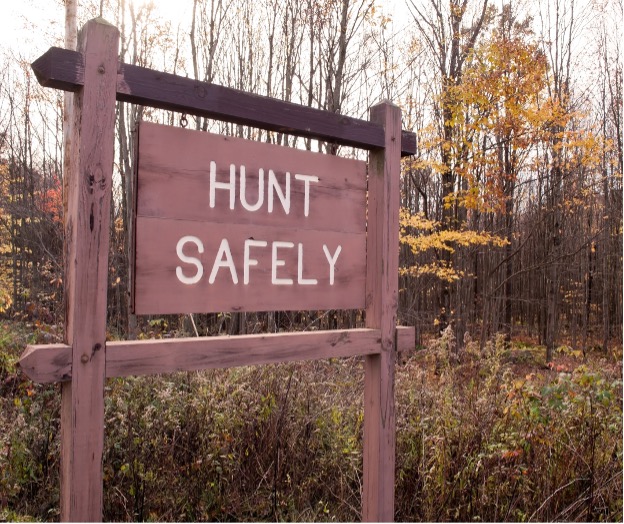
Hunting, a practice deeply embedded in human history, has transitioned from a survival necessity to a regulated activity with significant implications for wildlife conservation and public safety. The establishment of hunting laws and regulations marks a critical evolution in the relationship between humans and wildlife, emphasizing sustainable practices and the ethical treatment of animals. This detailed exploration from Downtown Nixa Mark Anderson delves into the intricacies of hunting regulations, including licensing, seasons, bag limits, and the overarching importance of legal compliance for conservation efforts and safety.
The Foundation of Hunting Regulations
At the heart of modern hunting regulations is the principle of conservation. The early 20th century witnessed the near extinction of several species due to unregulated hunting and habitat destruction. Recognizing the urgency of the situation, conservationists and governments instituted laws to manage wildlife populations sustainably. Today, these regulations are enforced at various levels—international, national, and local—to address the unique ecological and social dynamics of each region.
Licensing and Education
A key component of hunting regulation is the requirement for hunters to obtain a license. Licensing serves multiple purposes: it limits hunting to individuals who have demonstrated knowledge of laws and safety practices, generates revenue for conservation programs, and helps manage the number of hunters to prevent overharvesting. In many jurisdictions, obtaining a hunting license also requires completing a hunter education course. These courses cover a broad range of topics, including ethics, wildlife laws, safety, and survival skills, ensuring that hunters are well-prepared to engage in responsible and ethical hunting practices.
Hunting Seasons
One of the most visible aspects of hunting regulation is the establishment of specific hunting seasons. These seasons are carefully planned based on the breeding cycles and migratory patterns of species, aiming to minimize the impact on wildlife populations. By restricting hunting to certain times of the year, regulations help ensure that species have the opportunity to reproduce and maintain healthy populations. Seasons may vary significantly by region and species, reflecting the diverse ecological needs and conservation goals.
Bag Limits
Bag limits are another crucial regulatory tool, setting a cap on the number of animals that can be taken by a hunter within a specified period. These limits are determined through scientific research and population management objectives, aiming to prevent overharvesting and ensure the long-term sustainability of wildlife populations. Bag limits can vary widely among species, reflecting their reproductive rates, population status, and ecological role.
The Role of Hunters in Conservation
Hunters play a unique role in conservation efforts. Through the purchase of licenses, tags, and stamps, hunters contribute financially to wildlife management and habitat restoration projects. Moreover, hunters often participate in conservation organizations and volunteer for habitat improvement initiatives, demonstrating a vested interest in the health of wildlife populations and ecosystems.
Ethical Hunting Practices
Ethical hunting goes beyond legal compliance, encompassing respect for wildlife and the environment. This includes practicing fair chase principles, striving for quick and humane kills, and minimizing waste by utilizing as much of the animal as possible. Ethical hunters also respect property boundaries, share knowledge and skills with new hunters, and participate in efforts to combat poaching and illegal wildlife trade.
The Importance of Legal Compliance
Adherence to hunting laws and regulations is not only a legal obligation but also a moral one. Illegal hunting activities, such as poaching and exceeding bag limits, undermine conservation efforts, threaten biodiversity, and can disrupt local ecosystems. Moreover, non-compliance can lead to severe penalties, including fines, license revocation, and even imprisonment. By following regulations, hunters support sustainable wildlife management, contribute to the conservation of natural habitats, and ensure the safety of themselves and others.
Safety in the Field
Safety is a paramount concern in hunting, both for hunters and the general public. Hunting laws and regulations often include provisions for safe weapon handling, wearing visible clothing, and restrictions on hunting near populated areas. Hunter education courses play a critical role in promoting safe hunting practices and reducing accidents and injuries in the field.
Hunting laws and regulations are vital for the conservation of wildlife populations, the protection of natural habitats, and the safety of communities. By requiring licenses, establishing hunting seasons, and setting bag limits, these regulations ensure that hunting practices contribute positively to ecosystem health and biodiversity. Hunters, as stewards of the environment, have a responsibility to adhere to these laws, engage in ethical hunting practices, and participate actively in conservation efforts. As society continues to evolve, so will the regulations governing hunting, always with the aim of balancing human activities with the needs of the natural world.



